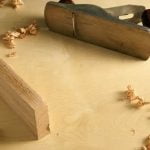Woodworking enthusiasts know just how crucial clamps are for holding pieces of wood together during the construction process. In this article, we will discuss the different types of clamps used in woodworking projects, as well as provide a step-by-step guide on making DIY wooden clamps. Whether you are a beginner or an experienced woodworker, knowing how to make your own clamps can save you time and money and give you a sense of accomplishment.
Clamps are essential tools in woodworking because they hold the workpieces in place, allowing for accurate and precise assembly. Without them, it would be nearly impossible to glue, drill, or assemble wood pieces effectively. Understanding the importance of clamps will help you appreciate their value and empower you to make your own customized wooden clamps tailored to your specific needs.
In the following sections, we will explore the various types of clamps commonly used in woodworking projects and delve into a detailed guide on making DIY wooden clamps. We will also cover the materials and tools needed for this project, as well as tips for choosing the right wood. Additionally, we will address common mistakes to avoid and provide advice on using and maintaining homemade wooden clamps.
Types of Clamps Used in Woodworking Projects
In woodworking projects, clamps are essential tools that help to hold pieces of wood together while glue dries or when working on intricate joinery. There are various types of clamps used in woodworking, each designed for specific tasks and applications. The right type of clamp can make a significant difference in the quality and success of your woodworking project.
One common type of clamp used in woodworking is the bar clamp. These clamps consist of a long steel bar with adjustable jaws that can be tightened to secure the workpiece. Bar clamps are versatile and can be used for a wide range of projects, from securing large panels during glue-ups to holding smaller pieces for precision work.
Another popular type is the spring clamp, which features soft, pivoting jaw pads and a spring-loaded mechanism that makes them easy to use with one hand. Spring clamps are ideal for holding lightweight materials or when you need to quickly secure something in place.
C-clamps are another essential tool in woodworking. These heavy-duty metal clamps are shaped like the letter “C” and have adjustable screw mechanisms for tightening. They are commonly used for securing workpieces to a workbench or holding pieces together during drilling or cutting operations. Each type of clamp has its own advantages and limitations, so it’s important to choose the right one based on your specific woodworking needs and project requirements.
Step-by-Step Guide on Making DIY Wooden Clamps for Woodworking
Woodworking clamps are essential tools for holding wood pieces together securely during the gluing and assembly process. While there are various types of clamps available in the market, making your own wooden clamps can be a cost-effective and rewarding alternative. In this section, we will provide you with a step-by-step guide on how to make DIY wooden clamps for woodworking.
Step 1: Cut the Wood.
Begin by cutting your chosen wood into two equal-sized pieces to create the jaws of the clamp. Ensure that the length and width of both pieces are identical to achieve a uniform clamp design. The length of the wood will depend on your specific woodworking projects and the size of the clamp you need.
Step 2: Shape the Jaws
Using a saw or chisel, shape one end of each wooden piece into a curved jaw design. This curved shape will allow the clamp to provide even pressure when tightened. Take your time with this step to ensure precision and smoothness in the shaping process.
Step 3: Create Holes for Screws
Next, drill holes through both wooden pieces near their non-curved ends. These holes will serve as guides for screws that will be used to secure the moveable jaw onto the fixed jaw of the clamp. Make sure the holes align accurately between both pieces to ensure proper functioning.
By following these steps, you can create your own DIY wooden clamps for woodworking projects. This cost-effective solution allows you to customize your clamps according to your specific needs while also honing your carpentry skills.
Materials and Tools Needed for Making Wooden Clamps
When it comes to making wooden clamps for your woodworking projects, having the right materials and tools is essential. Being properly equipped will ensure that your DIY wooden clamps are sturdy, reliable, and long-lasting. Here’s a closer look at what you’ll need to get started:
Materials
The first thing you’ll need to gather is the material for the actual clamp. This can be wood of various types, depending on your personal preference and the specific requirements of your project. You may also need metal components such as screws or bolts for the moving parts of your clamp.
Tools
In addition to the materials, there are several tools that you’ll need to have on hand in order to make wooden clamps. Some essential tools include a saw for cutting the wood to size, a drill for creating holes or countersinks, and sandpaper for smoothing rough edges. Clamps, measuring tape, and a hammer may also be useful during the construction process.
Add-Ons
Depending on the design of your DIY wooden clamps, you may also want to consider adding protective pads or grips to prevent damaging the wood surfaces you’ll be working with. This could involve using rubber or felt pads that can be attached to the faces of your home-made clamps.
By making sure you have all these materials and tools ready before you start making clamps for woodworking, you can streamline your project and increase your chances of success.
Tips for Choosing the Right Wood for Making Clamps
Choosing the right wood for making clamps is crucial in ensuring the durability and effectiveness of your woodworking tools. The type of wood you use will greatly affect the strength and longevity of your homemade clamps. Here are some important tips to consider when choosing the right wood for making clamps:
Consider Hardwoods Over Softwoods
Hardwoods, such as oak, maple, or cherry, are generally preferred for making clamps due to their strength and durability. These types of wood can withstand the pressure and tension applied during woodworking projects, making them ideal choices for clamp construction. In contrast, softwoods like pine or spruce may not hold up as well under heavy clamping pressure.
Avoid Using Treated Wood
While treated wood may be more resistant to moisture and rot, it is not recommended for making clamps. The chemicals used in the treatment process can react with adhesives or finishes, compromising the integrity of the clamp. Stick to untreated hardwoods or other suitable non-treated woods for your clamp-making project.
Consider Grain Orientation
When selecting wood for making clamps, pay attention to the grain orientation. Look for straight-grained pieces that will provide uniform strength across the length of the clamp. Avoid using pieces with irregular grain patterns or knots as they may weaken the overall structure of the clamp.
By following these tips and carefully considering the type of wood you use, you can ensure that your homemade wooden clamps are sturdy, reliable, and perfectly suited for your woodworking projects. Keep these considerations in mind when sourcing materials for your DIY clamp-making endeavors to achieve optimal results.
Common Mistakes to Avoid When Making Clamps for Woodworking
Making clamps for woodworking can be a fun and rewarding DIY project, but it’s important to avoid some common mistakes that can affect the functionality and durability of your homemade clamps. Here are some common mistakes to watch out for when making your own wooden clamps:
- Using the wrong type of wood: One common mistake in making wooden clamps is using the wrong type of wood. It’s important to choose a hardwood that is strong and durable, such as oak or maple, to ensure that your clamps can withstand the pressure exerted during woodworking projects. Softwoods like pine or cedar are not ideal for making clamps as they may not provide enough strength.
- Incorrect measurements and angles: Another mistake to avoid is taking incorrect measurements or cutting angles when making wooden clamps. Accuracy is crucial when it comes to ensuring that the pieces fit together properly and that the clamp functions as intended. Double-check all measurements and angles before cutting to prevent any mishaps during assembly.
- Not allowing for sufficient drying time: When using wood glue in the assembly of your homemade wooden clamps, it’s important to allow for sufficient drying time. Rushing through this step can result in weaker joints and an overall less sturdy clamp. Follow the manufacturer’s instructions for drying times, and consider using clamps or weights to apply pressure while the glue sets.
By being mindful of these common mistakes, you can ensure that your homemade wooden clamps are effective and long-lasting tools for your woodworking projects.
How to Use and Maintain Homemade Wooden Clamps
Wooden clamps are a vital tool in any woodworking shop. They are versatile and can be used for a wide range of projects, from small-scale crafts to larger furniture pieces. Once you have made your own wooden clamps, it is important to know how to use and maintain them properly to ensure their longevity and effectiveness.
Using homemade wooden clamps is relatively straightforward, but there are a few key tips to keep in mind. Here are some steps on how to use wooden clamps effectively:
– Positioning: Place the wooden clamp at the appropriate spot on the workpiece, ensuring that it is secure and tight enough to hold the materials together.
– Adjusting: Use the adjustable screw mechanism on the clamp to tighten or loosen as needed, depending on the specific requirements of your project.
– Removing: After completing your woodworking project, release the pressure on the clamp by slowly turning the handle counterclockwise. This will allow you to safely remove the clamp without damaging your workpiece.
Maintaining homemade wooden clamps is also crucial for their durability and performance over time. Here are some essential maintenance tips:
1. Regular Inspection: Periodically check your wooden clamps for any signs of wear or damage, such as cracks or splintering.
2. Cleaning: Keep your clamps clean and free from dust and debris by wiping them down after each use with a dry cloth.
3. Lubrication: Apply a small amount of lubricant to the moving parts of the clamp to ensure smooth operation and prevent rust or corrosion.
Learning how to make clamps for woodworking is just one part of the process – knowing how to properly use and maintain them is equally important for achieving professional-quality results in your woodworking projects. By following these guidelines, you can maximize the functionality and lifespan of your homemade wooden clamps.
Additional Resources and Pro Tips for Making Clamps for Woodworking
In conclusion, making your own clamps for woodworking projects can be a cost-effective and rewarding alternative to purchasing them. Not only does it allow you to customize the size and design of the clamps to fit your specific needs, but it also gives you the satisfaction of creating a tool that is essential to your craft.
By following the step-by-step guide outlined in this article, as well as considering the tips for choosing the right wood and avoiding common mistakes, you can create functional and durable wooden clamps for all your woodworking projects.
It’s important to remember that while making DIY wooden clamps may require some initial investment in materials and tools, the long-term benefits make it a worthwhile endeavor. Additionally, learning how to use and maintain homemade wooden clamps will further enhance their performance and longevity. With proper care and maintenance, these homemade clamps can last for many years, providing reliable support for various woodworking tasks.
For those who are looking to delve deeper into the world of DIY woodworking tools, there are plenty of additional resources available online that offer pro tips and advanced techniques for making clamps. Whether it’s exploring different designs or learning about innovative ways to improve clamp functionality, these resources can help take your woodworking skills to the next level.
Overall, with patience, practice, and a bit of creativity, anyone can learn how to make clamps for woodworking and enjoy the satisfaction of using tools they’ve crafted themselves.
Frequently Asked Questions
Can You Make Your Own Clamps?
Yes, it is possible to make your own clamps for woodworking. This can be done using materials such as wood, metal, or even PVC piping. By creating a design that includes a tightening mechanism, you can effectively create DIY clamps that are suitable for various woodworking projects.
What Can You Use Instead of Clamps for Woodworking?
If you don’t have access to traditional clamps for woodworking, there are alternative options that can be used. For example, you can use rubber bands, zip ties, rope, or even ratchet straps to secure pieces of wood together while glue dries or when making cuts.
These alternatives may not provide the same level of pressure and precision as traditional clamps but they can still be effective in certain situations.
What Pipe Is Best for Woodworking Clamps?
When it comes to using pipes for woodworking clamps, black pipe (also known as steel pipe) is often recommended due to its strength and durability. Black pipe is commonly used in plumbing but its threaded ends make it suitable for creating custom clamp configurations by connecting various fittings and lengths of pipe together.
The versatility and availability of black pipe make it a popular choice for DIY woodworking clamps.

Hi everyone! I’m a woodworker and blogger, and this is my woodworking blog. In my blog, I share tips and tricks for woodworkers of all skill levels, as well as project ideas that you can try yourself.





